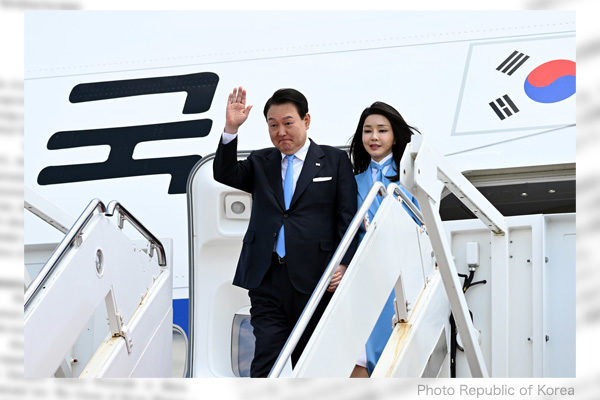South Korean President Yoon Suk Yeol visited the United States and joined U.S. President Joe Biden to release a Washington Declaration on April 26 advocating strengthened U.S. extended deterrence for South Korea. “Our two leaders have decided to significantly strengthen extended deterrence of our two countries against North Korea’s nuclear and missile threats so that we can achieve peace through the superiority of overwhelming forces and not a false peace based on the goodwill of the other side,” Yoon said at a joint press conference with Biden.
Amid rapidly growing North Korean nuclear threats, South Korean President Yoon is making serious efforts to defend its security. At the same time, I feel frustration with the absence of a crisis mentality in Japan exposed to the same North Korean threats and additional China’s nuclear threats surrounding a possible Taiwan contingency. I cannot but conclude that postwar Japan decisively lacks an instinct to defend its security.
Growing North Korean nuclear threats
In 2022, North Korea fired at least 73 missiles in 37 occasions, which represented the highest ever frequency. In the first four months of this year, it fired 30 missiles in 15 occasions, including the testing of a nuclear-capable underwater attack drone. North Korea’s missile launches are divided into a “test launch” and a “training launch.” Test launches are carried out by the Academy of Defense Science in charge of missile development. Missiles in the test launch stage have yet to be deployed. Missiles after development are operationally deployed by the military and subjected to training launches. This year, North Korea repeated training missile launches and announced them as nuclear attack drills.
North Korean nuclear threats have surely grown this year. Significantly, North Korea carried out training launches of Hwasong-15 and -17 intercontinental ballistic missiles (ICBMs) that can reach the U.S. mainland. North Korea has acquired or is acquiring capabilities to make nuclear attacks on the continental U.S. As Hwasong-15 and -17 use liquid fuel, it takes time before launching. Accordingly, signs of preparations for their launches are easy to detect. In April, however, North Korea test-launched a Hwasong-18 ICBM using solid fuel. If the missile is completed, it will be difficult to detect signs and strike before launches.
Another unignorable point is that North Korea has repeated training launches of tactical nuclear missiles. It has also unveiled many small nuclear warheads. North Korea has been making steady preparations to launch tactical nuclear attacks on South Korea and Japan.
Japan failing to feel a danger as a danger
North Korea has already deployed nuclear missiles that can reach Japan. The National Defense Strategy, one of the three security documents adopted by the Japanese government late last year, says: “In order to maintain its regime, North Korea has concentrated its efforts on enhancing its arsenal of weapons of mass destruction (WMDs) and ballistic missiles. It is assessed that North Korea already possesses the technological capabilities to mount a nuclear warhead on its ballistic missiles, whose range includes Japan, and is able to attack Japan with such a missile.” In fact, this assessment was written in the National Defense Program Guidelines adopted in December 2018.
Will the United States use nuclear weapons for a U.S. ally even at the risk of coming under nuclear attacks itself? South Korea under President Yoon has seriously tackled the question. Regrettably, Japan has not taken such attitude. Japan’s failure to feel a danger as a danger is the largest danger for Japan.
Tsutomu Nishioka is a senior fellow and a Planning Committee member at the Japan Institute for National Fundamentals and a visiting professor at Reitaku University. He covers South and North Koreas.


